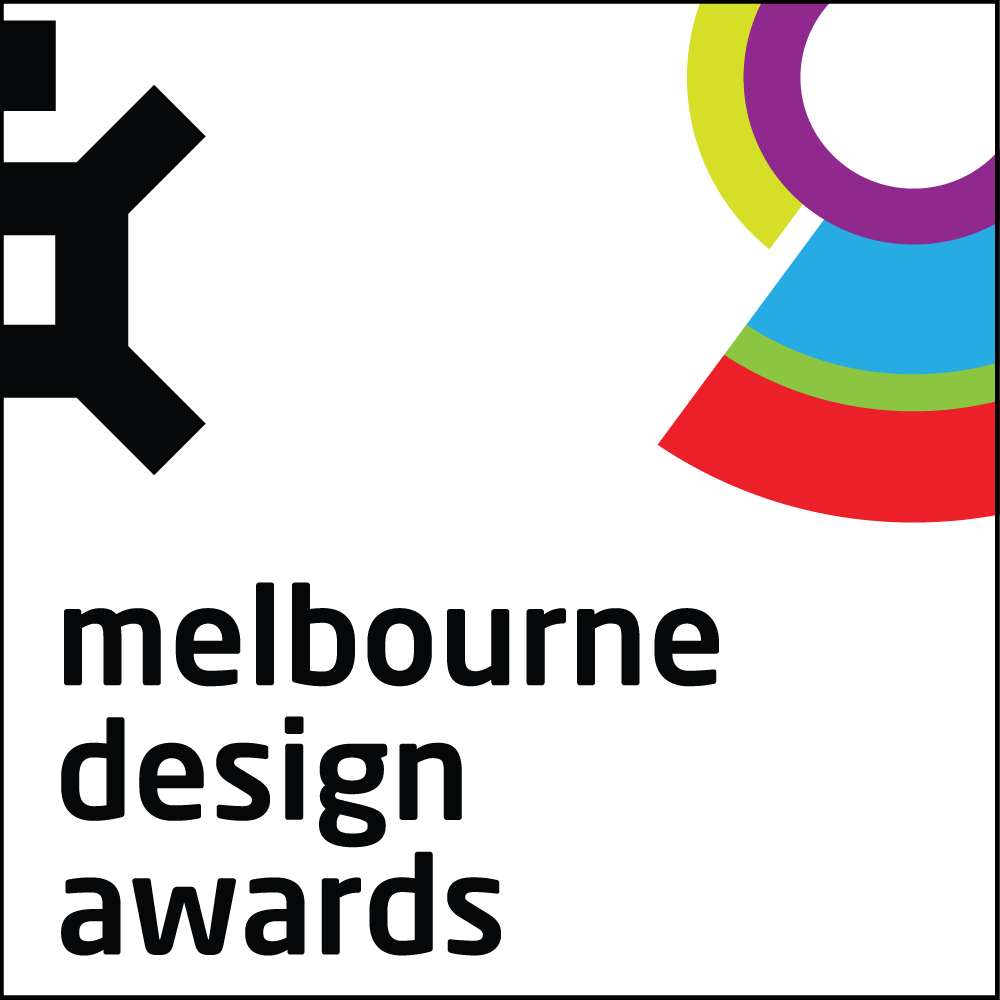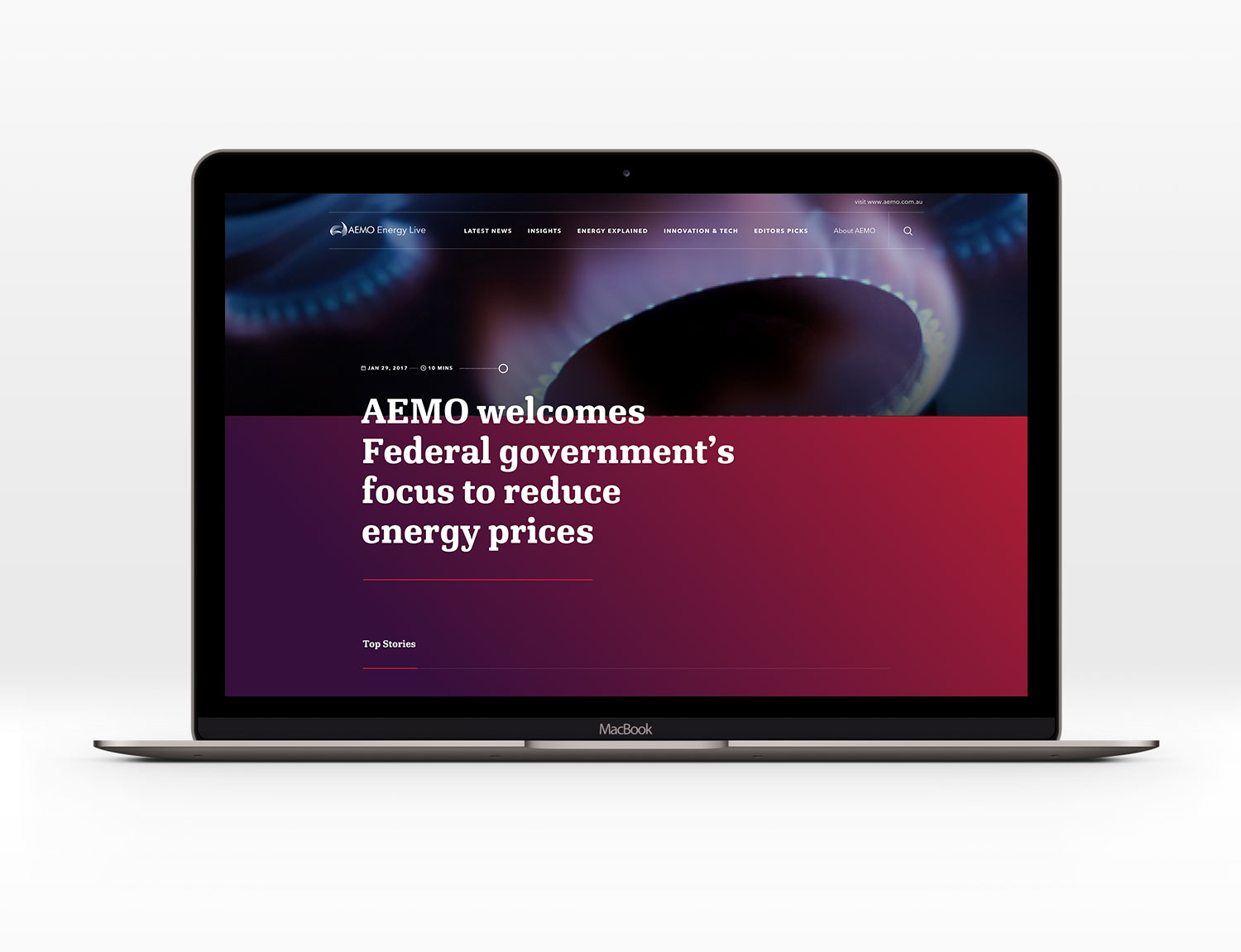
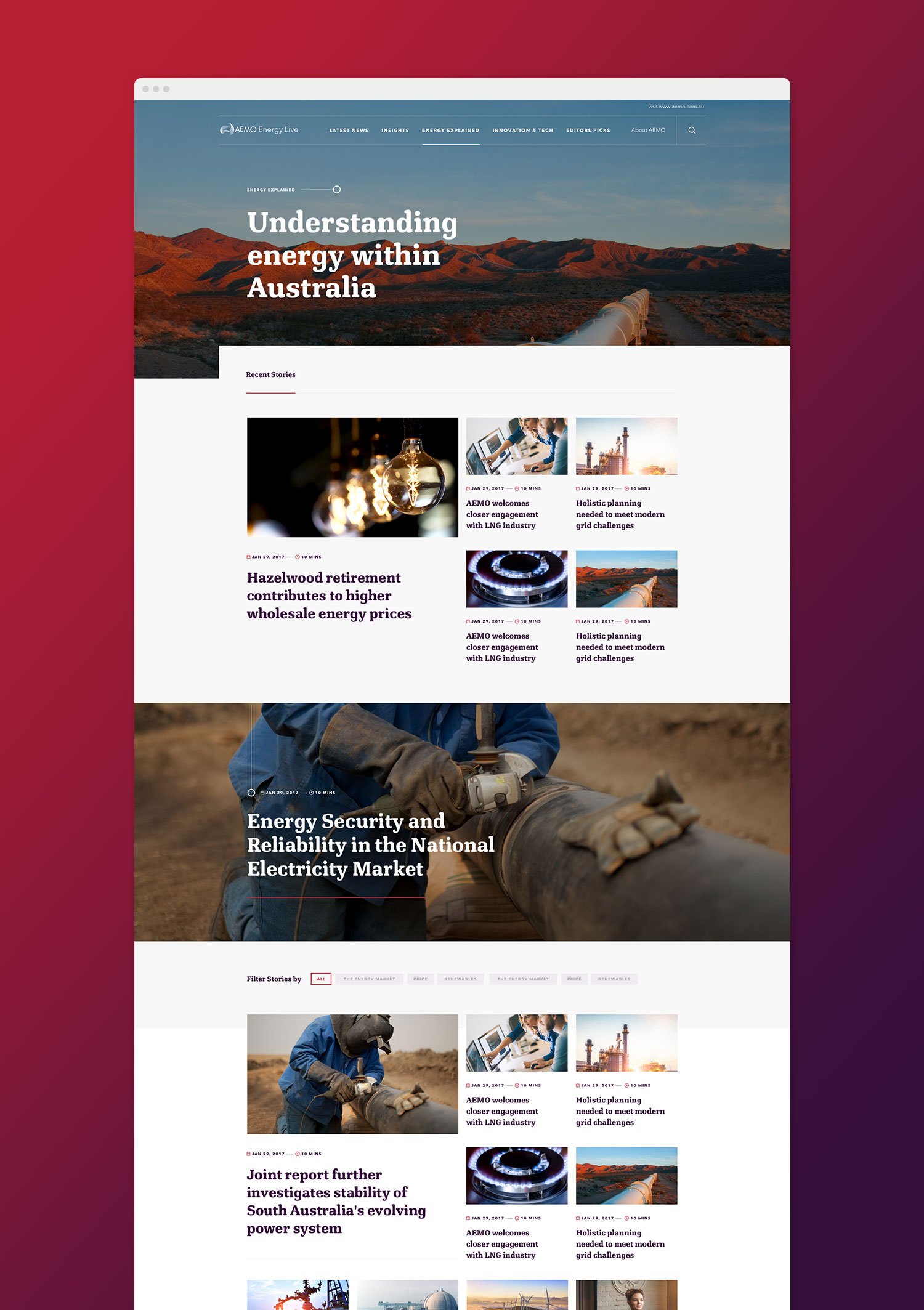
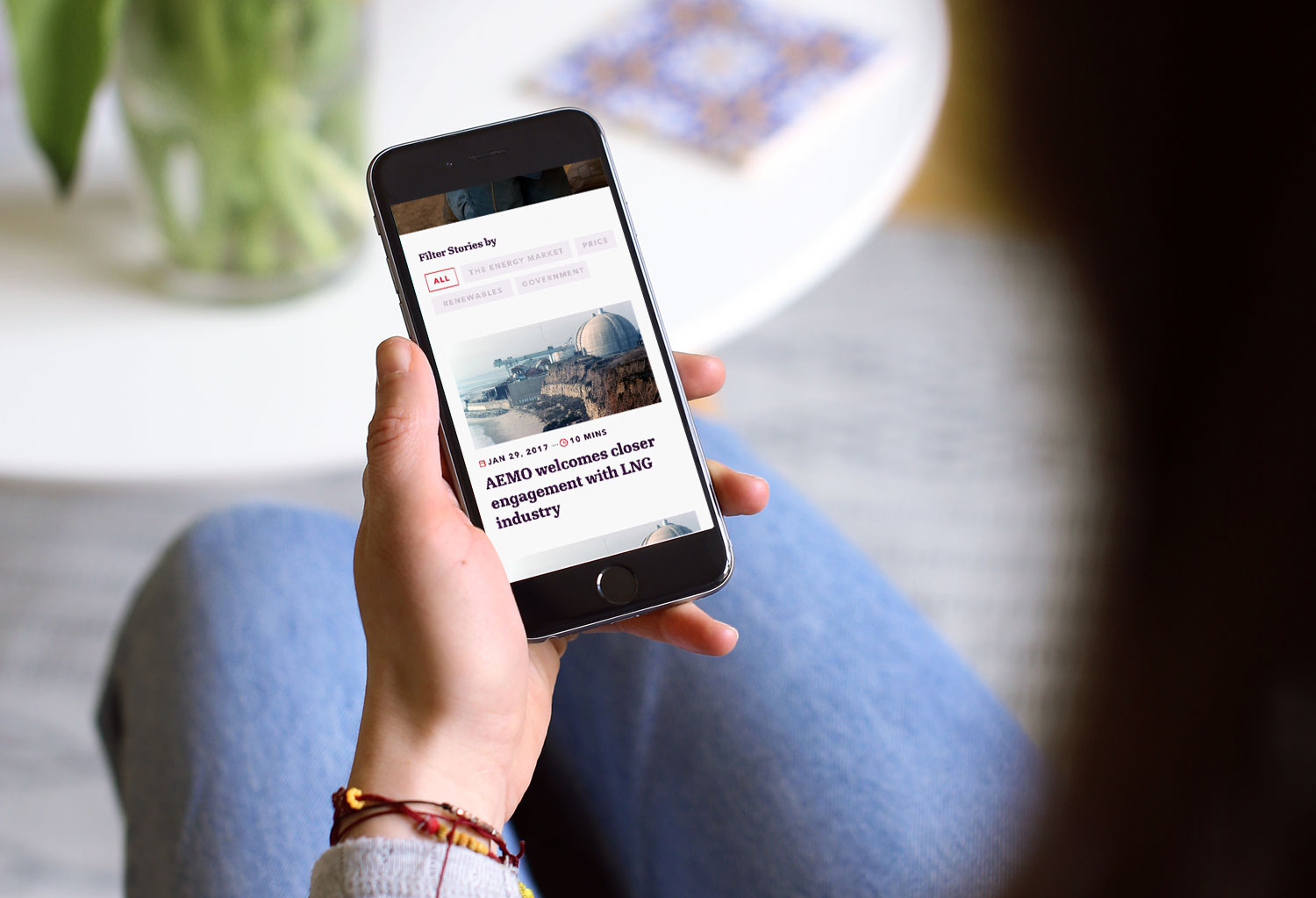
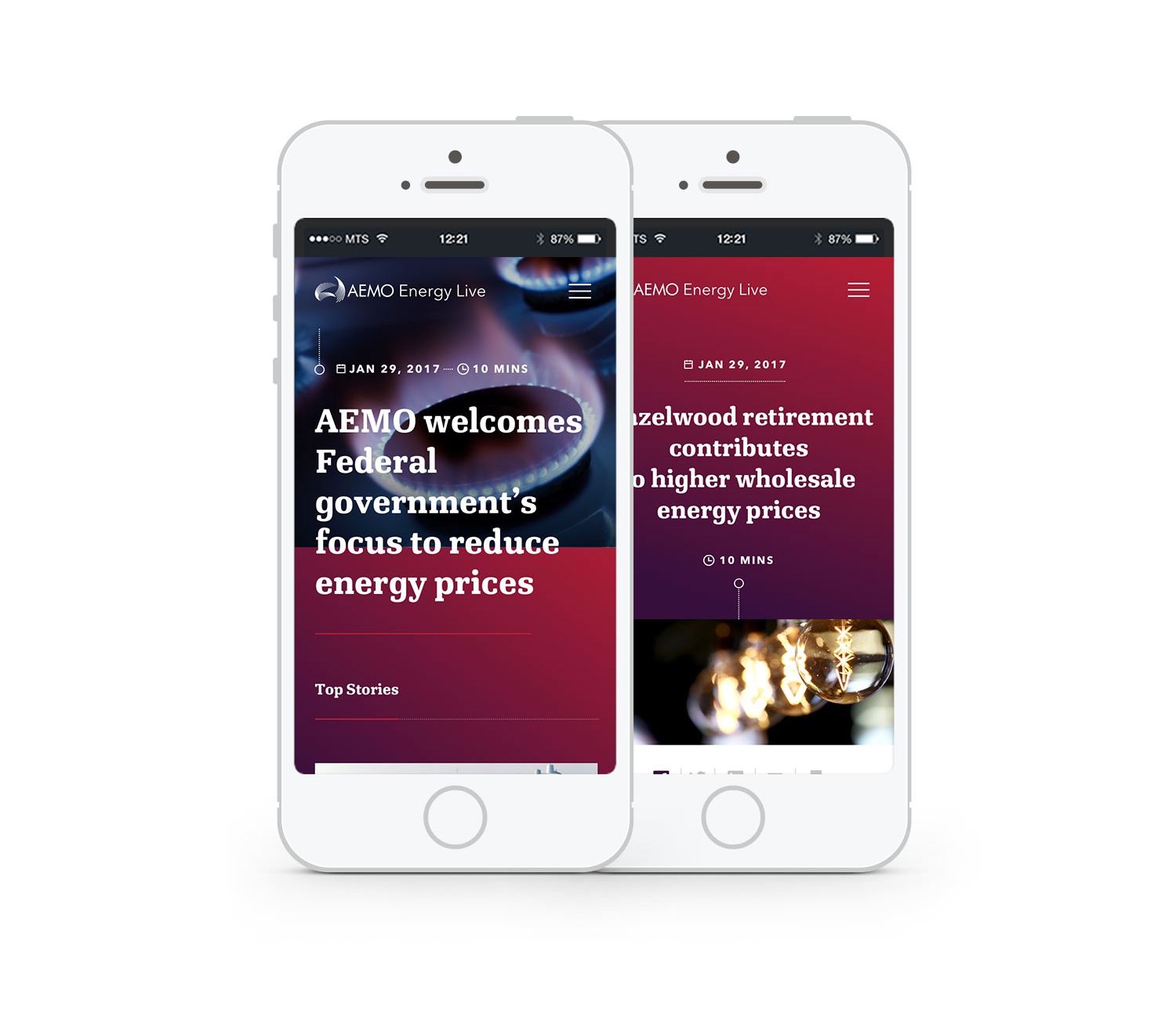
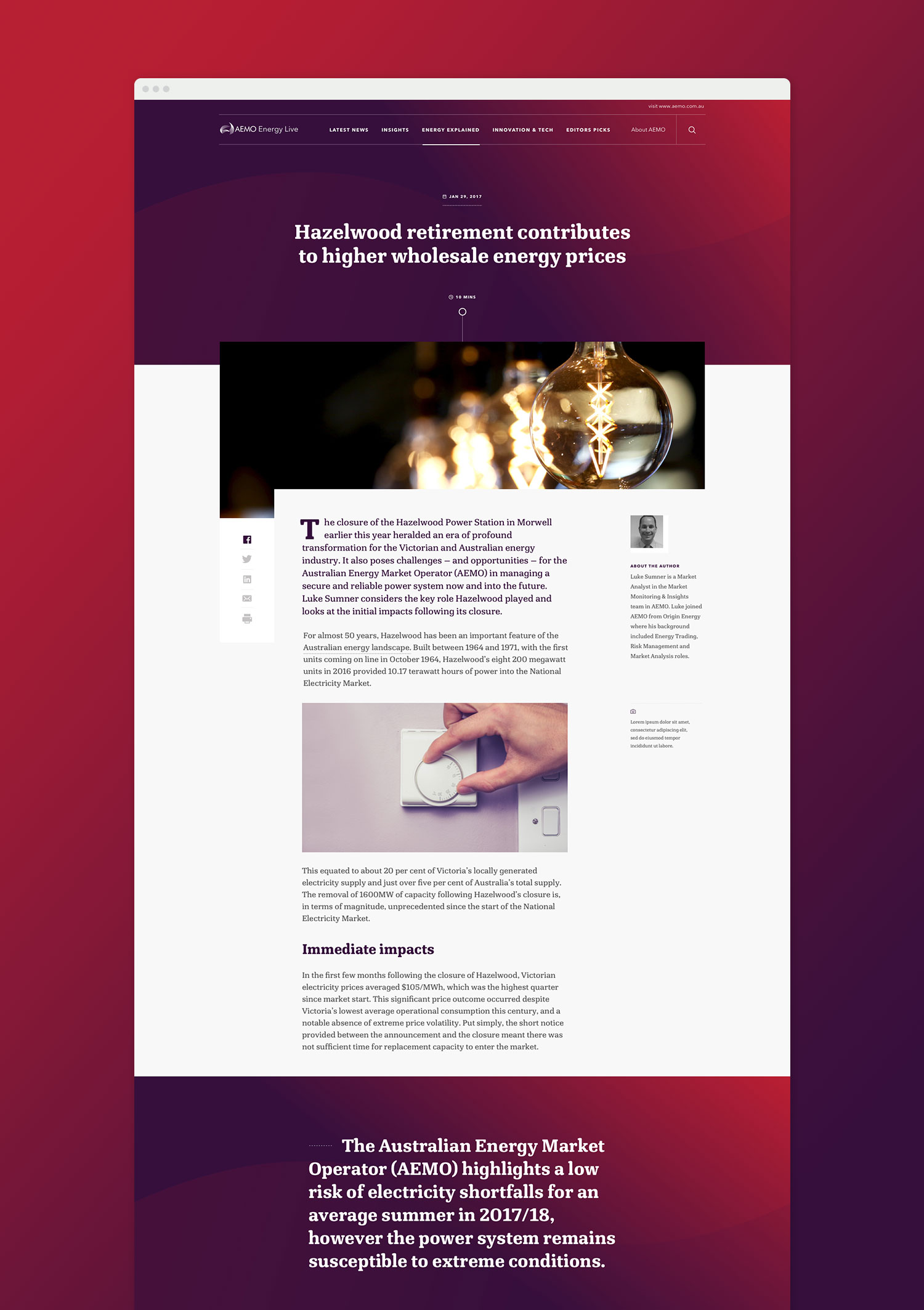
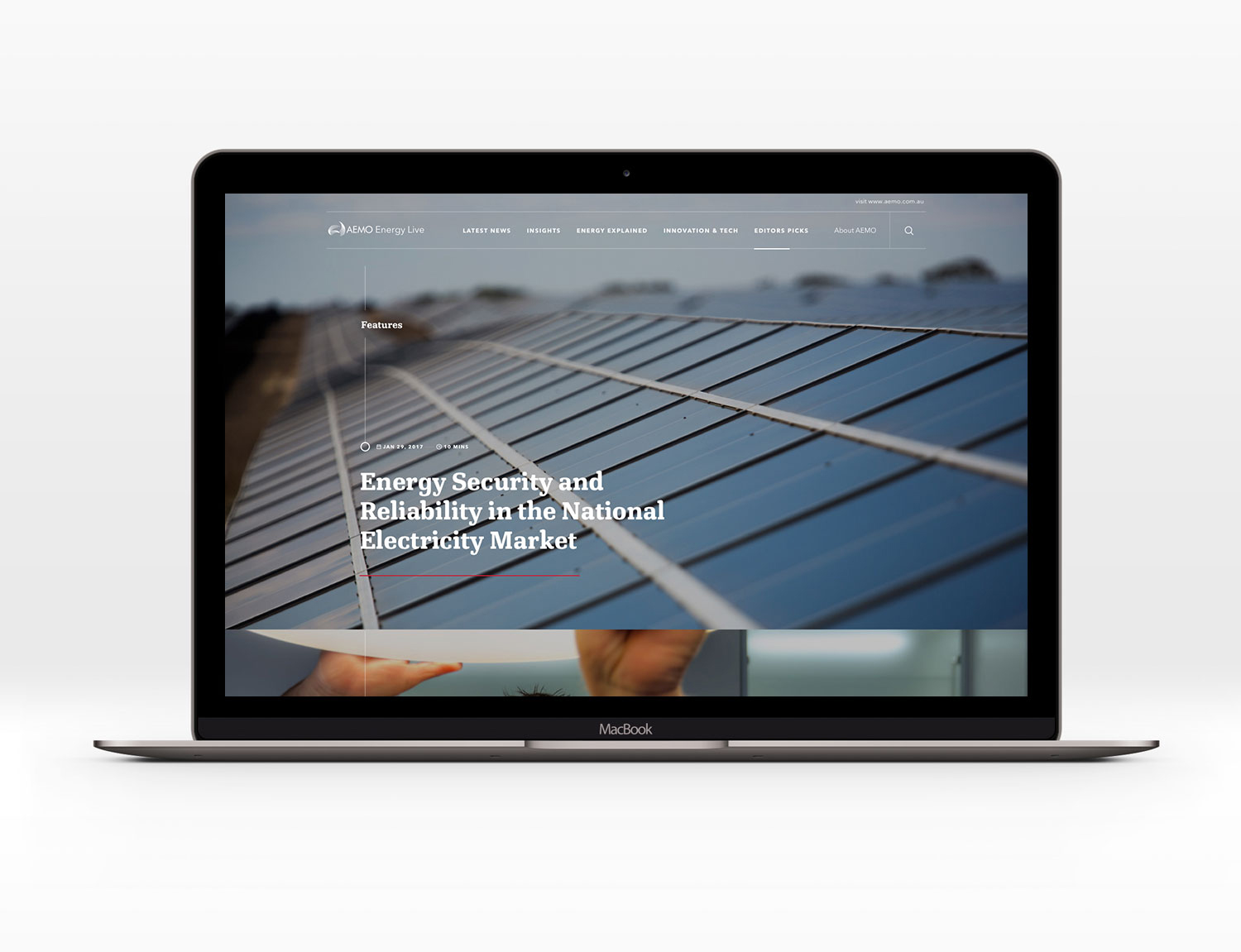
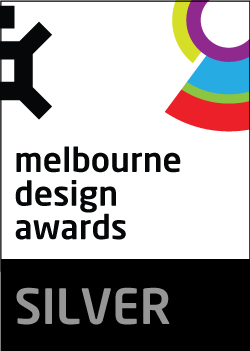
Project Overview
How do you get people excited about an organisation they’ve never heard of, in an industry they are both confused and angry about?
By being highly transparent, making the complex simple and removing a lot of myths.
We’re talking about the Australian Energy Industry. Just mention the topic and everyone has a point of view, normally negative. Typical concerns are about price increases, selling assets overseas cheaper than Australians can buy them for; confusion about the difference between producers and retailers; potential supply disturbances; environmental concern; as well as being bombarded by telemarketers promising “money off.” Normally at roughly the same rate as every other energy retailer.
With so many conflicting and often negative voices, the Australian Energy Market Operator (AEMO) wanted to deliver an engaging content hub to drive change, influence conversations and thought-lead on all things energy in Australia.
An impartial, honest voice.
Project Commissioner
AEMO - Australian Energy Market Operator
Project Creator
Team
AEMO
Executive General Manager - Public Affairs: Joe Adamo
Project Manager: David Jones
General Manager Communications and Corporate Affairs: Stuart Allott
Senior Web and Electronic Media Advisor: Felicity Bodger
Hardhat
Account Director: Alexandra Harrison
Producer: Lauren Lee
Senior Designer: Kate Gordes
Front-end Developer: Brendan Timmons
Front-end Developer: Chris Lucas
Back-end Developer: Get Started
Project Brief
Established in 2009, AEMO is Australia’s independent energy markets and power systems operator, responsible for the day-to-day management of the wholesale energy market, as well as providing critical planning, forecasting and power systems information and security advice.
Despite this, few people outside of the energy industry knew of AEMO's existence. Their power (forgive the pun) was being overwhelmed by commercial producers, suppliers, retailers, politicians and the media.
As such, they no longer wanted to take a back seat on providing energy information and needed a channel to drive and own the conversation around the energy sector in the consumer marketplace.
AEMO approached Hardhat for a digital solution to this challenge, following the state-wide power outage across South Australia in 2016. As AEMO’s Executive General Manager Public Affairs, Joe Adamo said: “The circumstances of the statewide SA blackout, as well as other high profile events earlier that year, highlighted the need for us to increase our proactive position in the public eye. This increased exposure and spotlight provided us a unique and real opportunity to evolve our public profile and take a stronger position as the independent voice and thought-leader on energy issues.”
The solution had to:
1. Accelerate AEMO’s arrival into the conversation on Australia’s energy.
2. Create a platform that would engage new audiences.
In short, AEMO wanted to establish category leadership, and differentiation from other energy news sources, as a fairly new player to the scene.
Project Need
The hub was the first of its kind in Australia for the local energy market. Without direct comparisons within the industry, we looked to examples in other sectors (e.g. ANZ’s Bluenotes and Bupa’s Blue Room) whilst taking inspiration from simple, industry-leading blog platforms, such as Broadsheet, The Intercept, and Medium, to create an intuitive design that tied back into the needs of the user.
As well as needing to cover broad and varying topics, and be frequently updated, our core task was to make the complex simple.
Whilst still providing news and an explanation of who AEMO is and what it does, we took the entry point as something less ‘corporate feeling’ and more "newsy". A big part of this is using a very visual approach, with bold, clear, inviting text before entering any particular article, podcast, or video within the site.
User Experience
The four key design challenges that needed to be addressed were:
1. Creating an engaging content hub that would appeal to both the general public and media.
2. Guaranteeing simplicity of navigation by focusing on a straightforward journey that asks little from the user.
3. Applying AEMO's new brand style guide to the hub’s design.
4. Avoiding a dry corporate aesthetic by ensuring the design was contemporary, dynamic and easy to interact with.
Project Marketing
User research found the hub needed to be separate from the main AEMO website as the platforms had different audience groups for information: public and media for the hub, and the energy industry for the main website.
Based on these audience interests, the site’s navigation and content centred around five categories which users could quickly delve into through extensive filtering options.
We needed to grab our users' attention as quickly as possible and ensure that the diverse range of preferred content formats were considered in order to achieve a strong website performance using:
1. Strong visuals and simple headlines.
2. Varying content formats including podcasts, articles, graphics and video content.
The site is attracting visitors, repeat visits and credibility as the place to go for impartial facts on the Australian Energy industry.
Content created for the site has been picked up on numerous occasions by mainstream media with the site receiving positive reviews by industry, senior government representatives and the Australian public.
Between 1 December 2017 and 31 March 2018 the hub had:
- 17,857 new visitors with 8,782 on mobile devices.
- Highest traffic on January 19th with 1, 170 active users and 2, 499 page views.
- 7,335 visitors came to the site via a social network.
The launch of the EnergyLive newsletter in March 2018 has received an open rate of 30% (20% above the industry average).
Digital - News & information
We all rely on digital services that broadcast or diffuse news and current affairs both locally and globally, keep us up to date with important information such as weather, warnings and hazards and allow us to quickly access information and reference resources.
More Details

